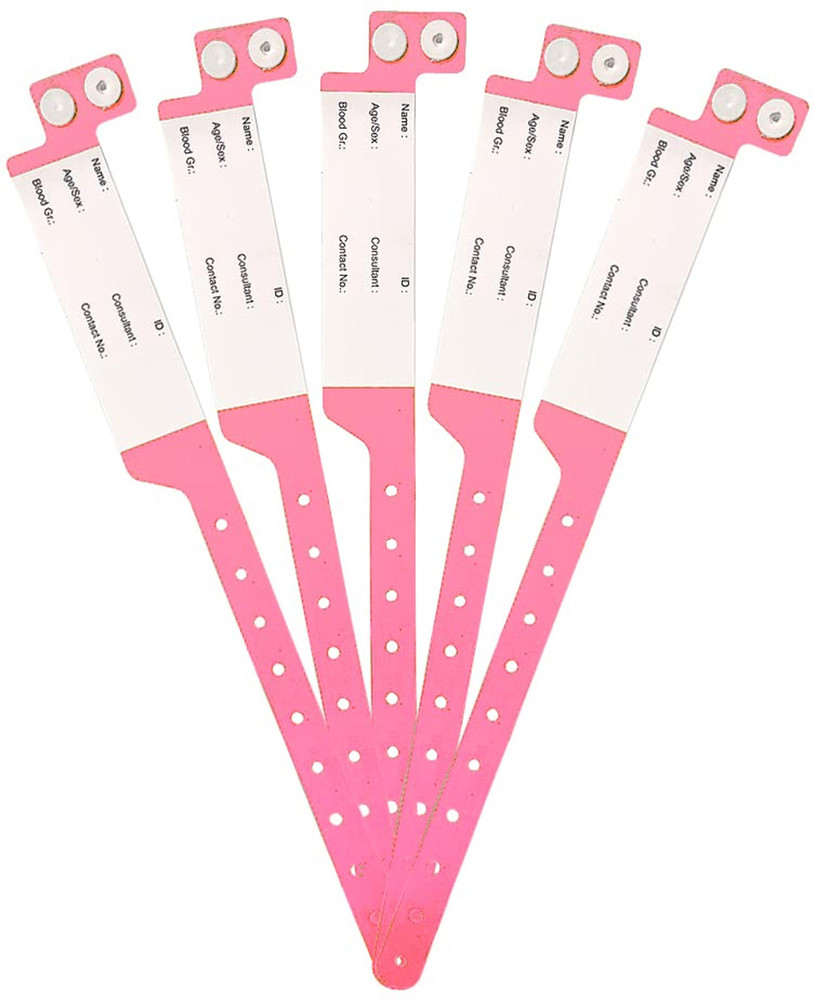Why Investing in a High-Quality Patient Identification Band is Crucial for Medical Institutions
Why Investing in a High-Quality Patient Identification Band is Crucial for Medical Institutions
Blog Article
Exploring the Different Kinds Of Patient Identification Band Made Use Of in Clinical Facilities
In the detailed globe of medical care, the important role of Patient Identification bands typically goes undetected. These bands, varying from easy paper wristbands to sophisticated RFID bands, form the backbone of Patient security methods, ensuring accuracy in Patient Identification.
Comprehending the Value of Patient Identification Bands
While they may appear like mere accessories, Patient Identification bands play an important duty in clinical centers. These bands serve as an important tool for verifying Patient identity, preventing medical mistakes related to misidentification. Patient Identification bands likewise aid in enhancing administrative jobs, making sure accurate record-keeping and invoicing.
Traditional Paper Wristbands: Their Use and Limitations
Standard paper wristbands have actually been a staple in Patient Identification across various clinical facilities. While their usage prevails, they nurture certain restrictions that may influence their performance in Patient management. This section will certainly concentrate on the extent of their application and the integral downsides linked with their use.
Paper Wristbands: Usage Scope
In the realm of Patient Identification, paper wristbands have actually long held a critical role. These bands are commonly utilized in outpatient settings, where the Patient's remain is short-lived. The wristbands include vital information such as the Patient's name, day of birth, and an one-of-a-kind Identification number. This basic, yet reliable system, permits doctor to swiftly and precisely recognize individuals, making sure the correct therapy is carried out. Paper wristbands are additionally made use of in emergency scenarios, where fast Identification is critical. Their usage encompasses occasions like blood contribution drives and mass vaccination programs, additionally stressing their flexibility. Regardless of developments in modern technology, the humble paper wristband stays a dependable and economical option for Patient Identification in various health care situations.
Limitations of Paper Wristbands
In spite of their widespread usage, paper wristbands are not without their drawbacks. In addition, paper wristbands frequently do not have the technological abilities of even more contemporary choices, such as barcoding or RFID chips, limiting their capability to just showing created details. Paper wristbands can trigger pain or skin inflammation to some patients, particularly when put on for prolonged durations.
Barcoded Wristbands: Improvements in Patient Identification
While Patient Identification has long been a vital facet of healthcare, the arrival of barcoded wristbands represents a substantial leap onward. These bands leverage the simplicity of barcoding modern technology, allowing for Patient details to be quickly scanned and accessed. They boost the rate and accuracy of Patient Identification, lowering the risk of medical mistakes connected to misidentification. Barcoded wristbands are affordable, very easy to produce, and eliminate handwriting errors usual with manual systems. They are not without restrictions. While they supply enhancements over traditional bands, the barcode can come to be smudged or used, making it unreadable. Regardless of this, barcoded wristbands remain an important device in modern-day medical care setups, symbolizing the intersection of innovation and Patient care.
Radio Frequency Identification (RFID) Bands: a Step In The Direction Of Futuristic Medical Care
The advancement of Patient Identification bands has produced the introduction of Radio Regularity Identification (RFID) Bands (patient identification band). These cutting-edge gadgets present vital advantages for health care facilities, offering an extra reliable and highly advanced methods of Patient Identification. The application of RFID in health care is a significant step towards a more futuristic strategy to Patient monitoring and safety
Recognizing RFID Bands

RFID Bands: Trick Benefits
Mainly, these bands enhance Patient safety by offering precise, instantaneous Identification, consequently lowering medical errors. RFID bands can other keep a substantial amount of Patient data, consisting of clinical background and allergic reactions, allowing individualized treatment. Overall, RFID bands represent a considerable improvement in Patient Identification modern technology, profiting both patients and health care carriers.
Implementing RFID in Healthcare
As we step right into a highly advanced era, the implementation of RFID bands in health care comes to be significantly vital. These bands offer a seamless method to track and recognize people, ensuring their security and boosting performance in treatment procedures. RFID bands offer various benefits over traditional Identification techniques. They can save a vast quantity of information, including the Patient's case history and treatment strategies, which can be conveniently accessed by doctor. This data assists physicians make educated choices pertaining to the Patient's therapy strategy. Additionally, RFID bands reduce medical errors by supplying exact Patient Identification, which is vital in preventing misdiagnosis or wrong medicine administration. Hence, the implementation of RFID bands is a substantial step towards improving Patient security and medical care shipment.

Color-Coded Wristbands: Helping in Quick and Accurate Medical Diagnosis
In the busy environment of a medical center, color-coded wristbands have actually emerged as essential tools for swift and specific Identification of a client's clinical condition. These wristbands, worn by clients, bring details shades that correspond to various medical conditions or statuses. This system is made to provide prompt aesthetic cues to healthcare suppliers, enhancing Patient security and care quality.
Techniques for Efficient Execution and Administration of Patient ID Bands
Achieving optimum use of Patient Identification bands necessitates a well-structured strategy for their implementation and management. Patient education and learning is also important; patients need to comprehend the purpose of the bands and the requirement for their continuous wear. It's necessary to have a back-up plan in place, such as barcode scanning or biometrics, to make certain that Patient Identification is never jeopardized.
Conclusion
Patient Identification bands are essential in medical centers to guarantee safety and accuracy. Typical paper, barcoded, RFID, and color-coded wristbands each hold unique benefits, varying from cost-effectiveness to sophisticated information storage space and instantaneous clinical informs. Effective application and monitoring of these bands can significantly hop over to these guys reduce medical mistakes, improve efficiency, and boost general Patient treatment. Thus, understanding and using these Identification devices is vital for keeping high criteria in medical care.
These bands, differing from straightforward paper wristbands to sophisticated RFID bands, develop the foundation of Patient security methods, guaranteeing accuracy in Patient Identification.The advancement of Patient Identification bands has brought concerning the emergence of Radio Frequency Identification (RFID) Bands. Generally, RFID bands stand for a significant improvement in Patient Identification innovation, profiting both people and health care companies.
RFID bands reduce clinical mistakes by providing exact Patient Identification, which is critical in preventing misdiagnosis or incorrect medicine administration. Patient education and learning is likewise important; clients need to understand the purpose of Read More Here the bands and the need for their continuous wear.
Report this page